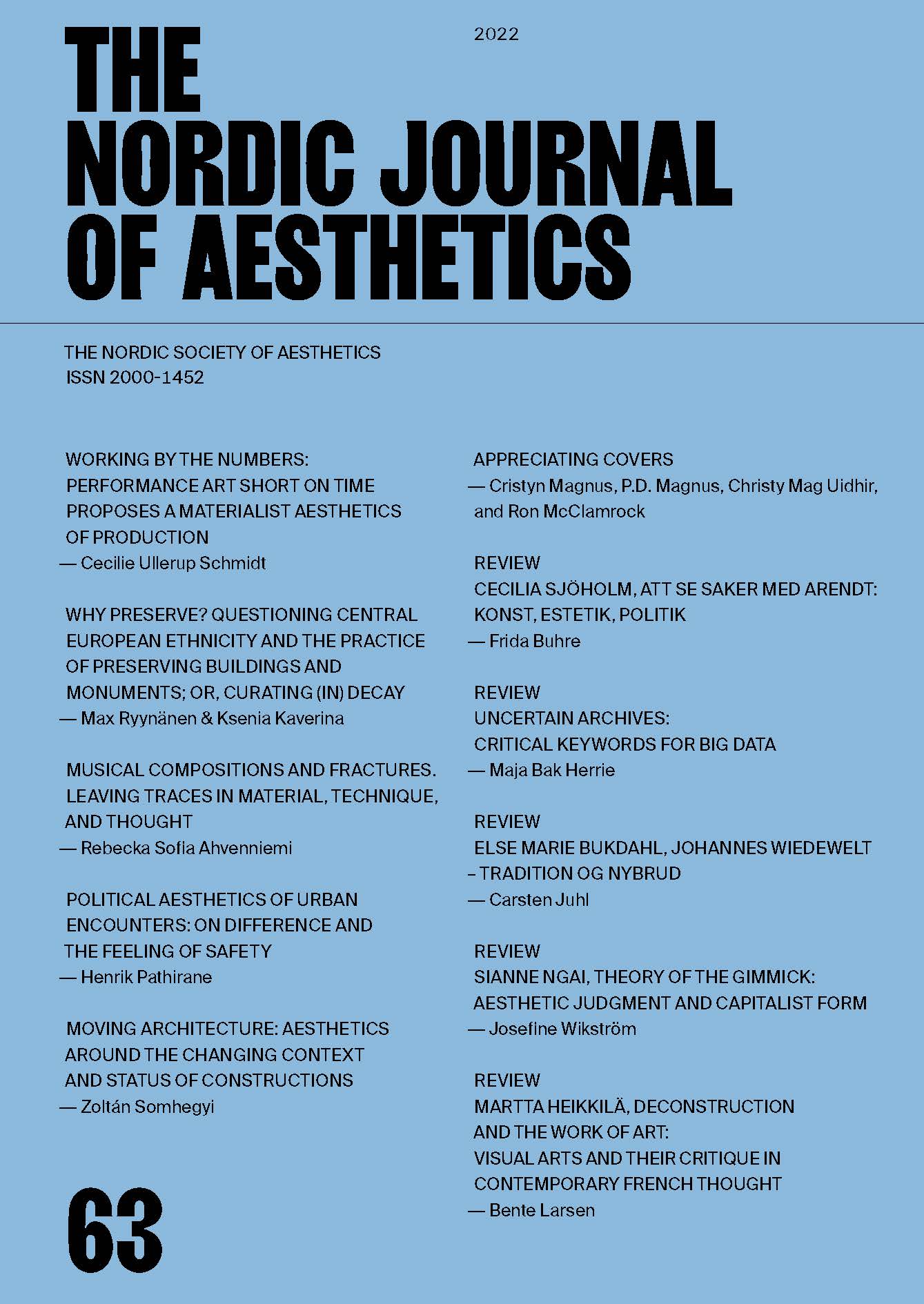MOVING ARCHITECTURE
AESTHETICS AROUND THE CHANGING CONTEXT AND STATUS OF CONSTRUCTIONS
DOI:
https://doi.org/10.7146/nja.v31i63.133121Keywords:
Aesthetics of Architecture, Transportation of Buildings, Marianne Heske, Vajiko Chachkhiani, Anssi PulkkinenAbstract
One of the primary and most typical features of a piece of architecture is its stability, its fixed and anchored state. It is therefore surprising and, at the same time, aesthetically inspiring and intellectually exciting when buildings are moved. In the present study I examine the agency of transportation and the aesthetic consequences of such translocations in three art projects. First, I analyse the work of the Norwegian Marianne Heske, the Georgian Vajiko Chachkhiani, and the Finn Anssi Pulkkinen. I lay out the aesthetic implications of the transformative decontextualization caused by the relocation of the original structure. In the second part of the paper, I present the main aspects that connect these otherwise different projects and explain why the complex and costly transportation of these pieces of architecture is relevant and justified.
Downloads
Published
How to Cite
Issue
Section
License
Copyright (c) 2022 Zoltán Somhegyi

This work is licensed under a Creative Commons Attribution 4.0 International License.
Authors who publish with this journal agree to the following terms:
- Authors retain copyright and grant the journal right of first publication with the work simultaneously licensed under a Creative Commons Attribution License that allows others to share the work with an acknowledgement of the work's authorship and initial publication in this journal.
- Authors are able to enter into separate, additional contractual arrangements for the non-exclusive distribution of the journal's published version of the work (e.g., post it to an institutional repository or publish it in a book), with an acknowledgement of its initial publication in this journal.
- Authors are permitted and encouraged to post their work online (e.g., in institutional repositories or on their website) prior to and during the submission process, as it can lead to productive exchanges, as well as earlier and greater citation of published work (See The Effect of Open Access).




